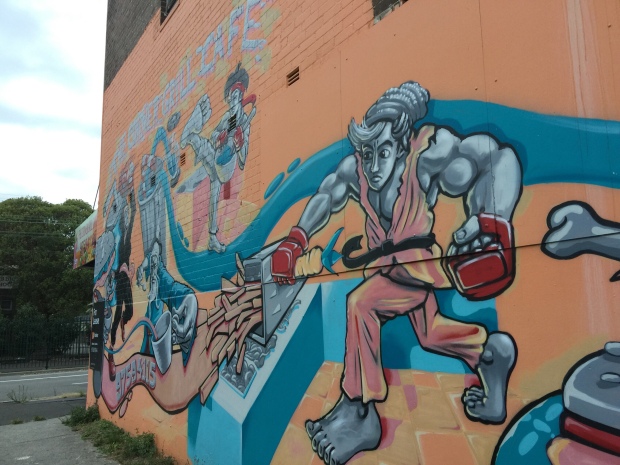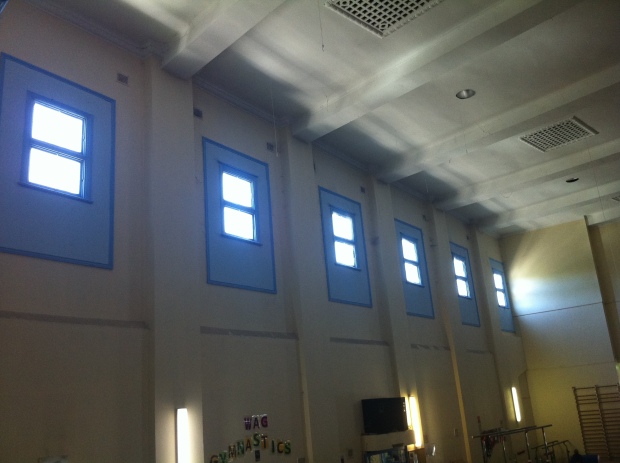Paragon No. 1 Theatre/Canterbury Leagues Club – Belmore, NSW
Opening in 1923 and closing in November 1958, the Paragon No. 1 Theatre had a longer life than its twin.

Paragon No. 1 Theatre, 1958. Courtesy Barry Sharp and City of Canterbury Local History Photograph Collection
Starting life as a picture theatre serving the undemanding entertainment needs of Belmore, the Paragon replaced a shed that stood on the Bridge Road site previously. Was the shed the suburb’s previous entertainment hub? Who knows. The Paragon No. 2 opened further up the road in 1928, and throughout the 30s and 40s, business was good.
The Canterbury-Bankstown Bulldogs rugby league team had been formed in 1935, and as early as 1939 the club was holding its annual meetings at the Paragon Theatre. The Paragon staff must have slighted the club somehow, because what goes around comes around. In 1957, the Canterbury-Bankstown League Club was formed to support the football club, and took up residency in a reconditioned naval hut built by club volunteers in nearby Collins Street.
By 1958, the Paragon was floundering, struggling against the introduction of TV and a decline in suburban cinemas. Meanwhile, the Canterbury-Bankstown Leagues Club was growing rapidly, and had already outgrown the naval hut. The club bought out the Paragon, and by 1960 had converted it into the spiffy new club premises seen above.
UPDATE: Courtesy of reader Tony, we’ve now got a look at the brochure handed out at the grand opening of the rejigged Leagues Club in 1960. Big thanks, Tony!
Incidentally, Mr. Frank Stewart, M. H. R., was a World War II veteran and ex-first grade Bulldog who went on to become the Minister for Tourism and Recreation in the Whitlam Government. It was Stewart who leaked info to the Federal Opposition regarding the Loans Affair, which ‘kicked off’ (heh) the chain of events that eventually brought down the Whitlam Government, but he also played a crucial part in the establishment of the Australian Institute of Sport. Oh, and he also presided over the opening of the Canterbury Leagues Club, but you knew that already.
It’s easy to imagine that the further growth of the club over the next 50 years into the behemoth it is today is indicative of the growing enthusiasm in the suburbs for RSL and Leagues clubs, which provided myriad entertainment options the Paragon could only have dreamed of. Realistically, the growth is probably also indicative of pokie profits.
The idea of a suburban cinema now seems quaint in comparison. In honour of its fallen homie, today’s Canterbury League Club features a ballroom named the Paragon Room, and there’s a Paragon Lane that runs beside the Club. No tributes to that naval hut, though.
A HUGE thanks to Lea Thomas at the Canterbury League Club for her generosity and assistance!
Paragon No. 2 Theatre/Australian Academy of Gymnastics – Belmore, NSW
Since 1928, the Paragon No. 2 has loomed over the intersection of Burwood Road and Knox Street, providing a monolithic eye-catcher for passers-by. It has remained remarkably well-preserved from its days as a cinema.

Paragon No. 2, 1981. Courtesy Barry Sharp and City of Canterbury Local History Photograph Collection
For thirty years, the Paragon No. 2 picture theatre provided Belmore locals with a venue for concerts, plays, movies and state government debates. Close to the train line, for years it was speculated that a train station would open up near the theatre, but the plan never went ahead. Knox Street was eventually cut off from Burwood Road, becoming a cul-de-sac and torpedoing easy access to the theatre by road. By June 1958, the time of its closure, the Paragon No. 2 had been operating on a restricted screening policy, further limiting its viability as a cinema.
Following its closure, the theatre was acquired by Jeldi Manufacturing, a Sydney-based textile company, who proceeded to use the building as storage for curtains and carpet.
In 1982, the site was discovered by Andre and Edwige Rizzo, a French couple who had migrated from France in 1970. Andre had represented France in gymnastics at the 1960 Rome Olympic Games, and was seeking to start a gymnastics academy. The Paragon No. 2 provided the perfect facility, enabling the gym to become the first club in NSW to provide both men’s and women’s training apparatus, and to function exclusively as a venue for artistic gymnastics.
Aside from minor practical refurbishments, the lobby is in remarkable condition. At the centre of this staircase is the former box office, now a display case for the academy’s numerous achievements.
The theatre’s 1144 seats may be gone, but again, the interior isn’t unrecognisable as a cinema, and gives a good idea of what it would have looked like.
The Academy is currently run by Antoine and Shannon Rizzo, who are proud to have coached young gymnasts here for the last 30 years. At this stage, it’s been a gymnasium just about as long as it was a cinema. Given the success rate of the Academy (Antoine’s brother Philippe Rizzo is Australia’s most successful male gymnast), Paragon has proved a fitting name. I’m sure Jeldi had no complaints about the quality of storage, either.
Of course, the name of the theatre begs the obvious question ‘what about Paragon No. 1 ?’. I asked Antoine Rizzo if he knew. He did:
A HUGE thanks to Antoine and Shannon Rizzo at the Australian Academy of Gymnastics for their generosity and assistance!
Gottlieb Electronics/All Electro Sales and Wholesaler/Unknown – Belmore, NSW
It’s hard to imagine now, but there was once a time where pinball was so popular that Gottlieb Amusements had an Australian subsidiary. It closed down sometime after 1995, which is in keeping with the decline of the pinball industry itself.
Google indicates a company called Sibercom (or Sybercom) operated out of this address for a time, so this must be where they built all the Terminators. There’s scant evidence to indicate what might be operating out of the building now, and the sign outside gives few clues:
Presumably, this is where bored hipsters worked in a time before JB Hifi.































